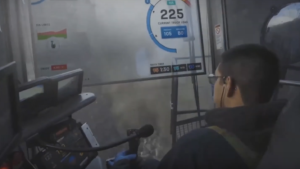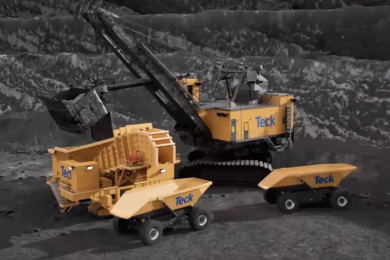Teck is one of the global miners innovating now to enable it to stay on top of its future mining goals, exemplified by its RACE21™ company-wide program to transform how it mines by harnessing technology and innovation to generate significant new value and improve safety, sustainability and efficiency. In a December 2020 presentation entitled The Art of Intelligence in Mining, part of the UBC Centre for Artificial Intelligence Decision-making and Action (CAIDA) Emerging Technologies: BC’s AI Showcase conference, Kalev Ruberg, Vice President and Chief Innovation Officer, gave some insights into what that future might look like for Teck’s operations based on what is already available and what is becoming available.
“How do we move mining to a manufacturing model? There are very many obstacles to doing that still – but it’s all about getting to a systems based application of AI and also getting out of the norm of building bigger machines all the time. And reaching zero GHG. Applying these technologies bits at a time within the process is really helping both optimise the process as well as reducing our footprint with that process.” Teck is also using simulation to better understand the outputs from machine learning. It is also worth noting that any RACE21™ developments will be measured with the same rigour as any change normally would within Teck operations – just because it’s innovative doesn’t mean it avoids having to deliver shareholder value.
Ruberg showed a future mine simulation that included a mix of machines and technologies that are already available along with some that are in development. It included a heads up display (HUD) for a shovel operator to see how much material they are loading into a surge loader, based on the Fully Mobile Surge Loader design developed by MMD, which decouples the shovel and truck to increase productivity and increase shovel utilisation. In the animation the surge loader loads smaller class battery electric mining trucks, with the vision showing an indicative smaller truck platform.

Ruberg was not suggesting these are the machine solutions it will opt for going forward, the future mine design just gave one possible scenario that Teck is considering. In more detail it showed an HUD remote controlled rope shovel loading a surge loader to better sync load to haul, plus 60-150 t cabless battery trucks producing significantly less dust and HUD RC support equipment such as dozers and service vehicles. The blasthole drills were using fracturing technologies to eliminate nitrogen and dust with drones surveying the pit.

“It’s a completely different philosophy – how do you swarm trucks on the site – as opposed to $10 million trucks how do you get $200,000 trucks on the site? You could have 1,000 of these and if they all have some form of autonomous intelligence that’s above Level 3 or 4, then they are running the mine and acting inherently independently throughout.”
He adds: “Of course the cycle times on batteries are still fairly short in high intensity usage so you still have to power these things up fairly often. But it is a very different vision…every single piece of equipment in the mine requires its own independent thinking capability. Certainly the whole autonomous [and electrification] work being done around the world would be applied in this scenario as well to achieve a GHG free mine. But it all doesn’t come without an interface to people plus what the reimagining means is that we also have to redesign our operating model, and redesign how we work throughout that entire process with reduced water usage and power consumption.” Of course that means also attracting, recruiting, training and retaining the workforce of the future.










